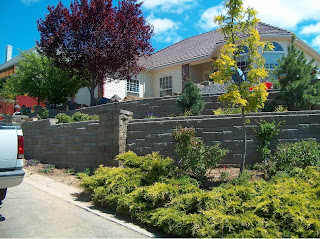Regardless of the type of landscaping and planting designs applied, the fencing installed or type of plants used, if the property is not maintained to the standard of care for that property type, the image of 'neglect and lack of care' will speak directly to those who can use this weakness to trespass or commit crimes. As a landscape designer, my objective in CPTED is to create physical space that considers the needs of the immediate users, the intended and expected functions for the space. In this process, I also have the responsibility to predict behavior of illegitimate users and intruders.
Territorial influence is created by designing a cohesive feeling amongst neighboring and adjacent properties, creating a sense of proprietorship so that would-be offenders perceive that territorial influence. Professional series low voltage lighting featuring LED lights is a cost effective way to maximize your crime prevention while adding value and diversity to your landscape. Lighting should be designed for proper photometrics, proper illumination that reduces glare and increases view corridors. Your lighting can provide up-lighting, down-lighting and pathway lighting that is providing sufficient and cost effective lighting throughout your property, detouring offenders.
The kind of shrubs and trees included in your landscape and where they are planted can add to home security as well as beautifying the property and increasing the resale value. The advantage plants have over architectural elements such as low walls or fences is cost and versatility. The disadvantage of plants is they require some frequent maintenance and care. Plantings will contribute to a positive and attractive environment, softening the frigidity and raw elements of urban living, while enriching the spatial qualities of the site.
When addressing a mature landscape, clear and maintain sightlines between street and residential property to allow better visibility from the street or sidewalk. Trees and low shrubs are perfect for defining an area but you must allow visibility between the shrub and lower branches of the tree canopy. When utilizing trees to define a project perimeter, small trees are most effective at separating potential conflicts between adjacent use areas and remember these trees must be positioned not to block site surveillance areas.

No comments:
Post a Comment